Pan-American Exposition Recycling: Second Life for Some Temporary Buildings
The Michigan State Building
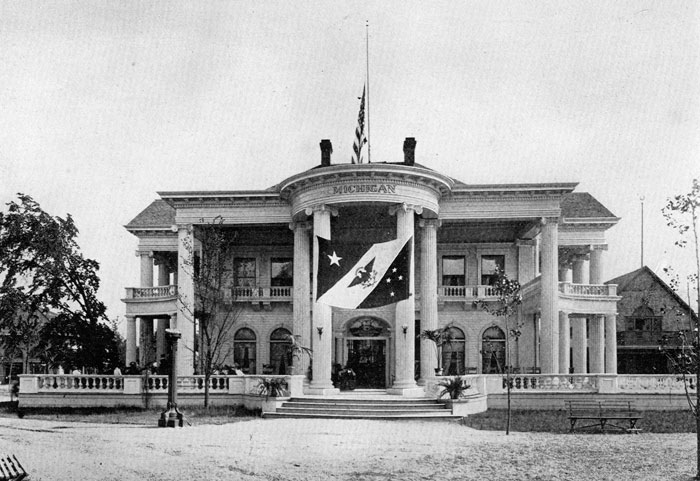
Michigan Building, C.D. Arnold.
Michigan constructed a stately building at the Pan-American Exposition for $10,000 ($271,623 in 2012 dollars). Like all other state buildings concentrated in the area bounded by Lincoln, Nottingham and today's Middlesex Road, it was intended to both proudly represent the home state (and encourage investment and new residents) and to be a home base for Michiganders visiting the Exposition. To that end, 35,000 visitors passed under its columns. Among them were Mr. and Mrs. T.A. Snyder, from Lehighton, Pennsylvania. Mrs. Snyder fell in love with the building and persuaded her husband to buy it. Read more about this building here.
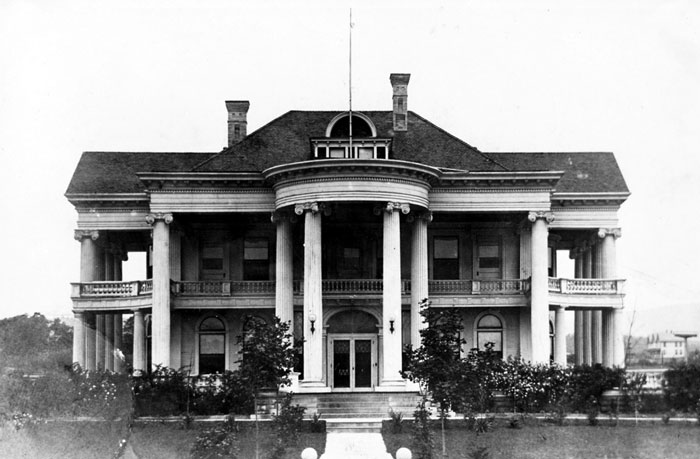
Colonial Court, Lehighton,Pennsylvania. Image source: Lamont Ebbert & Rebecca Finsel
T. Allen Snyder was a well-to-do lawyer, real estate developer, and former county school superintendent. He hired James Hurd to purchase the building at the end of October, 1901, when all state buildings, Midway concessions and other structures not built by the Exposition Company went on the auction block. James Hurd paid $500 for the Michigan building, then had it dismantled and shipped by rail to Lehighton for reassembly as the Snyder family home.
The building was to be located in a sparsely built new neighborhood in Lehighton; see aerial view here. Local artisans reassembled the mansion and installed steam heat. The building, constructed with an enormous reception hall and wide exterior porches, had been designed for summer use by many people. The Snyders and their son and daughter moved into the home in 1903 which immediately became the talk of the town for its size and splendor. Lanscaping included magnolias and maples. They entertained in style.
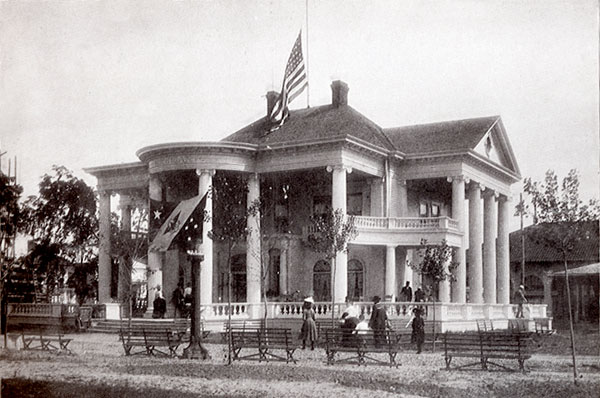
Alternate view of the Michigan Buiding. Image source: Michigan report
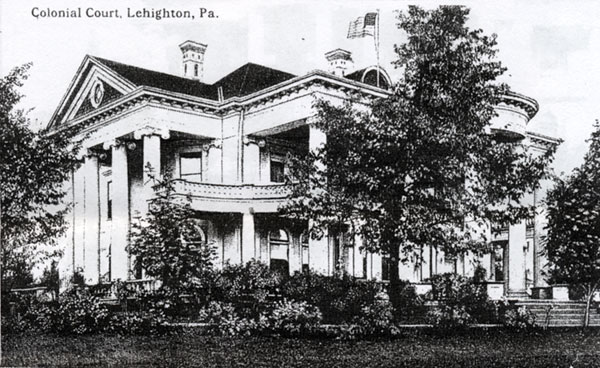
Postcard of Colonial Court. Image source: Lamont Ebbert & Rebecca Finsel
Mr. Snyder also purchased the Pennsylvania buildingand and had it moved in pieces to property he owned on Flagstaff Mountain. He planned to have it reconstructed as a resort but could not obtain a liquor license. He died in 1914 and the fate of the building was to be piecemeal; parts were constructed around Flagstaff Park, with the bulk of the lumber used to rebuild a park ballroom after a fire. See the Pennsylvania building here.
After Snyder's death, his wife and children moved out of the mansion and later rented it in 1915. One who lived there said it was difficult to heat "unless you owned a coal mine" and noted that sections of the mansion had to be closed off in winter to make it comfortable. On December 4, 1916, fire broke out and was not able to be contained. It burned to the ground.
"First Coin Machine Used By the U.S. Mint" Souvenir Concession
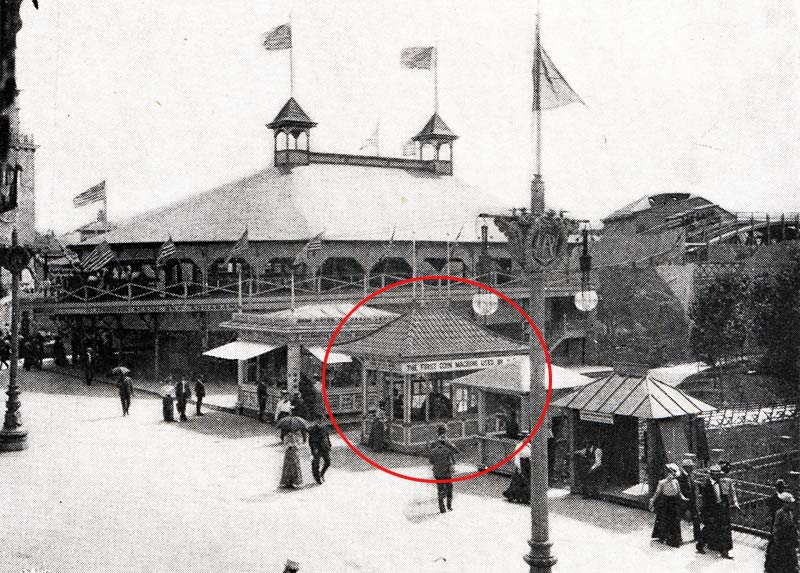
View along the Midway of the location of the concession demonstrating the first coin press used by the U.S. Mint. Image source: private collection
Many Exposition buildings were constructed to serve as refreshment and souvenir stands. Their fate after the close of the Exposition was not included in the newspapers of the day as were details of the sale of larger buildings. And so the Buffalo History Museum was surprised and delighted to learn in April 1998 that a little building from the Exposition existed in West Seneca.
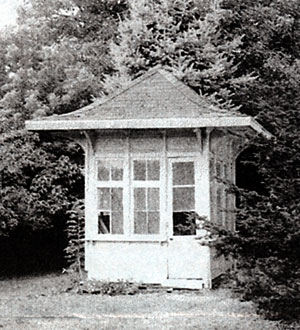
"Little Building" in 1998 on private property. Image source: TBHM
At the time of the communication to the Museum by the owners, the Werner family in West Seneca, it had been on the property since 1901. The Werners had used it in various ways over the years, always appreciating its historic origins. And the family now wished to donate it to the Museum.
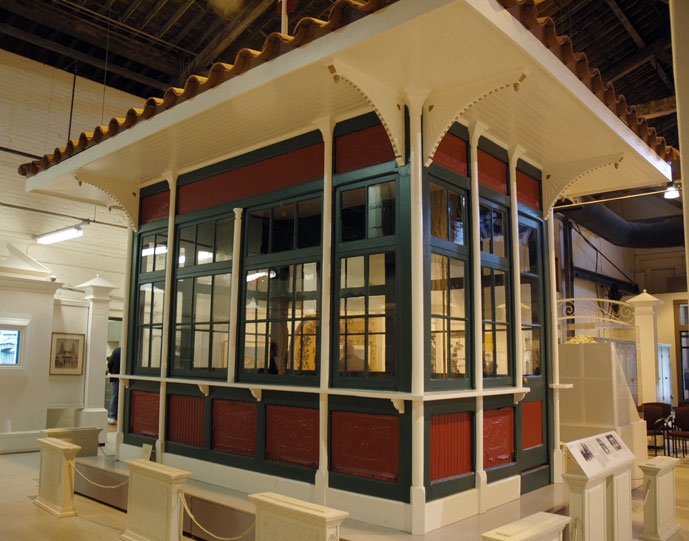
Restored Coin Machine Souvenir conession at The Buffalo History Museum Resource Center
After identifying funding and planning for the move of the building in its delicate condition, Melissa Wertman Brown, the Museum's Pan-American Collections Manager at that time, supervised its transportation to the Museum. It was restored by experts to its original colors and appearance and now is on exhibit at the Forest Avenue Resource Center of the Buffalo History Museum.
The Wisconsin Building
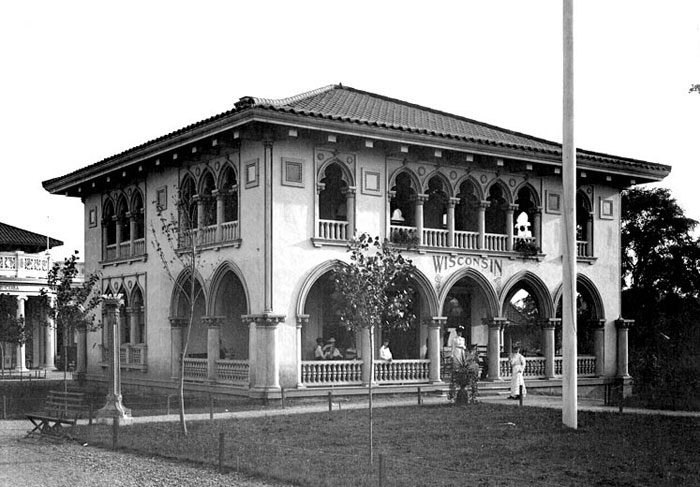
Wisconsin Building, C.D. Arnold
The state of Wisconsin spent $35,000 on its building ($950,683 in 2012 dollars) and boasted that it was the first state building finished, a claim also made by the Michigan building. Of all the state buildings at the Exposition, the Wisconsin building is the only structure to have been designed to match the overall Spanish architectural theme of the Exposition.
Because the building still exists, there has been continuing interest in it and how it was transported to Point Abino during a time when roads on the Canadian shore were paths and train tracks non-existent. Historian Austin Fox declared that after Buffalonian Henry Dickinson purchased it, he had it dismantled and transported across Lake Erie in 47 hay-wagon loads. The lake may or may not have been frozen at the time. Former Buffalo Mayor Erastus Knight owned it for a time, then John Kavany, and eventually the Alcock family. Throughout its history, it has been a curiosity and owners receive frequent inquiries from passers-by.
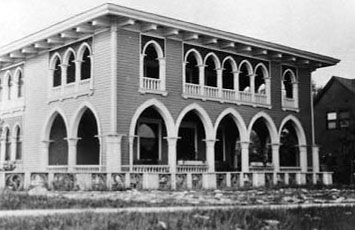
Later view of the Wisconsin Building at Point Abino, Ontario. Image source: Cathy Herbert, Fort Erie
The large home has been significantly remodeled on the outside, the windows squared off so that screen porches could be created. Inside there is a large open room on the first floor surrounded by a second-floor balcony; the bedrooms surround the balcony on the second floor. It is a summer house.
The Explorer's Headquarters from the "Darkest Africa" Concession
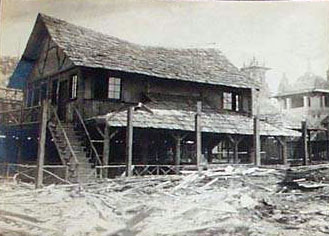
Explorer's HQ at the Exposition. Image source: private collection
The Exposition Midway concession, Darkest Africa, purported to be an ethnological display of African natives living in native huts, working on native crafts, and generally living their lives while available for observation by visitors who paid $.25 ($6.79) for the opportunity. One of the buildings in the concession was the Explorer's Headquarters, presumably used by the concession manager as office and residence. After the Exposition, Buffalo architect James A. Johnson (who was partner with August C. Esenwein in what became one of Buffalo's legendary architectural firms) purchased the building and had it moved to Point Abino in a manner unrecorded.
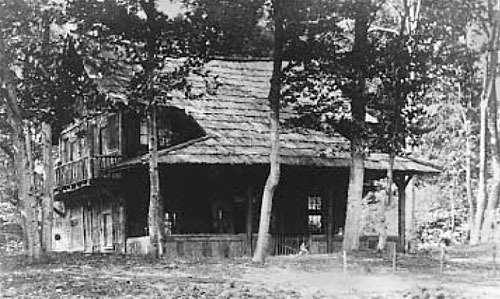
Explorer's HQ at Point Abino. Image source: Our Built Heritage, Austin Fox (Harvey Holzworth)
The building had a quiet history for around forty years and then was abandoned. It burned in the late 1940s.
Special thanks to eBay seller Rebecca Finsel for obtaining historical background on the Colonial Court mansion from Lehighton historian Lamont Ebbert and kindly sending it to me.